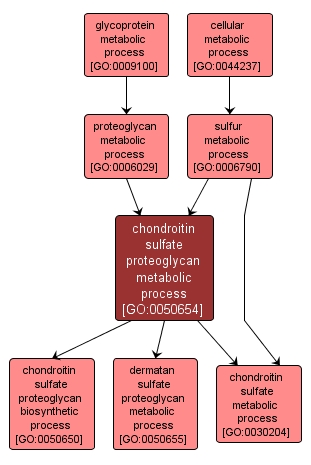| Desc: |
The chemical reactions and pathways involving chondroitin sulfate proteoglycan, any glycoprotein whose glycosaminoglycan units are chondroitin sulfate. Chondroitin sulfates are a group of 10-60 kDa glycosaminoglycans, widely distributed in cartilage and other mammalian connective tissues; the repeat units consist of beta-(1,4)-linked D-glucuronyl beta-(1,3)-N-acetyl-D-galactosamine sulfate. |














